► Vauxhall’s new Astra hatch and estate
► Sharp new look inside and out with new tech
► Plus, Astra GSe marks return of the go-faster Vauxhall
VXR is dead. Long live GSe. This is Vauxhall’s new Astra GSe, available as a hatchback and estate, which is its new flagship model. The new GSe tagline marks the return of the hot Vauxhall, but steady yourself: this first new production model to wear the badge is definitely warm, rather than hot.
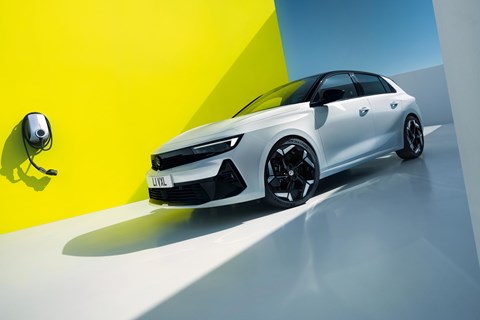
Given the ‘e’ part of GSe, you won’t score any brownie points for realising that every model to wear the new tagline will be electrified. Think of it as running along the same lines as Peugeot’s Sport Engineered cars, albeit with less spice than the cars from Peugeot. So much so that the Astra GSe launches with a 222bhp plug-in hybrid powertrain driving the front wheels.
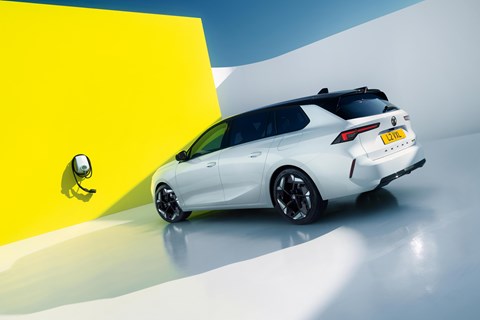
Read more about Vauxhall’s electrification plans here
Not so much hot, more like lukewarm then. Vauxhall hasn’t actually given out performance specs yet but, given the Astra GSe is on the same platform and uses the same powertrain as the Peugeot 308 Hybrid 225 and the DS 4 E-Tense, expect a 7.5-ish 0-62mph sprint time. But Vauxhall does say the GSe model is capable of 235+ mpg if used right. So yes, definitely not very hot.
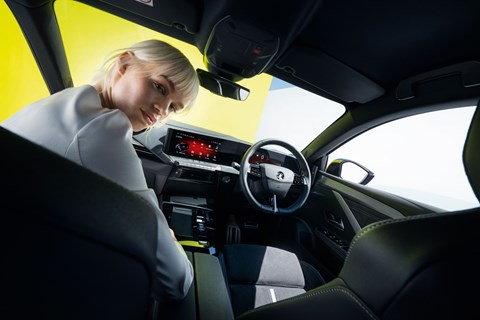
Even so, Vauxhall says the GSe has some specific tweaks and modifications over a standard Astra. The bumpers have been redesigned, there are tasty new wheels inspired by the Opel Manta GSe ElektroMOD as standard and Alcantara seats feature inside. Vauxhall says the GSe models also benefit from their own, sportier steering calibration as well as adaptive damping.

The new GSe models will go on sale towards the end of 2022, with first deliveries landing in 2023. Keep reading for more on the Vauxhall Astra.
New Vauxhall Astra: the CAR lowdown
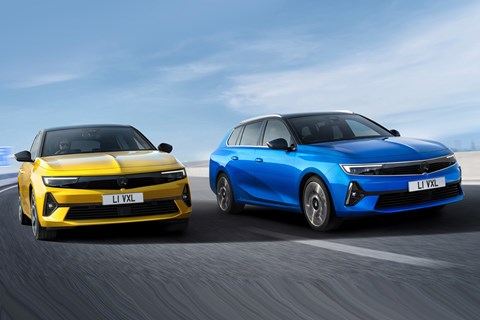
With Vauxhall now under the stewardship of Franco-Italian outfit Stellantis (see also: Peugeot, Citroen and Fiat), the family hatchback and estate has had a reboot. As well as sharing a platform with the striking new Peugeot 308, the newcomer has also pinched its French cousin’s attitude to exterior design, with more modern lines and a cleaner overall shape.
Vauxhall’s new Vizor design language looks far better on the Astra than it does on, say, the Crossland, and it fits well with the more futuristic shape. Inside, the new Astra has a cleaner, more upmarket-looking cabin with lots of shiny piano black plastic and huge screens across the driver’s side of the dash. Automatic models also get the funny little gear selector switch found in the Peugeot 308 and Citroen C4.
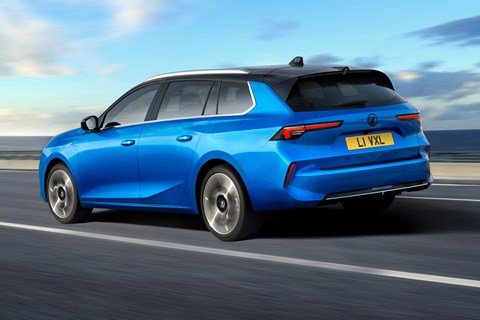
Specific to the Sports Tourer estate, Vauxhall says it’s actually 60mm shorter end-to-end than the previous-generation Astra estate. Vauxhall says it’s managed the car’s packaging far better than before and has, instead, stretched the wheelbase for better interior space.
But the styling isn’t all that’s changed. Vauxhall has also introduced a new, simplified, three-tier range that makes it much easier to pick the Astra that’s right for you. Basically, you get to choose whether you want the basic one, the sporty one or the upmarket one.
How handy is that new Astra estate?
Well, there’s a 608-litre luggage area with the seats up; the same as the Ford Focus Estate, slightly more than a VW Golf Estate and around 30 litres smaller than a Skoda Octavia Estate for comparison.
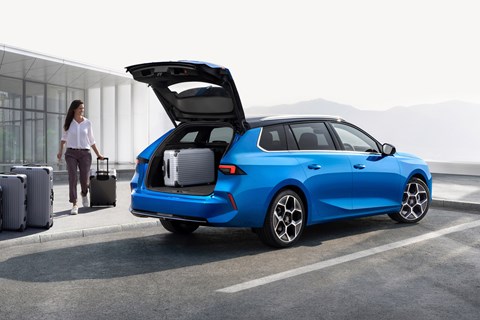
Vauxhall has tried to focus our attention on the new ‘Intelli-Space’ function in the boot. It’s essentially a movable boot floor to allow for more luggage space, or the opportunity to hide small items underneath it. This only extends to the petrol and diesel versions, though; the PHEV’s battery pack is located under the boot floor, which gets rid of this handy feature.
So what does the Astra come with?
If you choose the base model, dubbed Design, you get a surprising amount of kit thrown in. Alongside 16-inch alloy wheels, there’s a 10-inch touchscreen and a digital instrument display, as well as the Apple CarPlay and Android Auto smartphone connectivity systems. LED headlights, push-button ignition and climate control also feature, as do parking sensors at the front and rear.
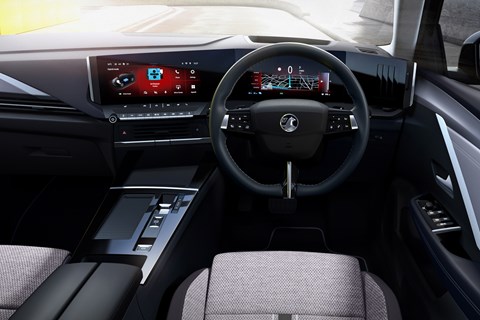
If you spend a little more on the GS Line version, you can add some black exterior features such as the roof, badge and wheels. The latter are 17-inch alloys and there’s a 360-degree camera, too. Adaptive cruise control, heated front seats and a heated steering wheel round out the highlights.
Top-of-the-range Ultimate versions get all the features of the GS Line, plus 18-inch wheels, a head-up display and wireless phone charging, not to mention Alcantara seat trim and some extra safety tech.
What about engines?
Yep, there’s a choice of those, too. The bulk of the range uses the 1.2-litre, three-cylinder petrol engine that’s powering pretty much everything in the Stellantis stable these days. The cheapest engine is the 109bhp version, but you can have it with 128bhp, too. And going for the more powerful engine gives you the chance to pick an automatic gearbox.
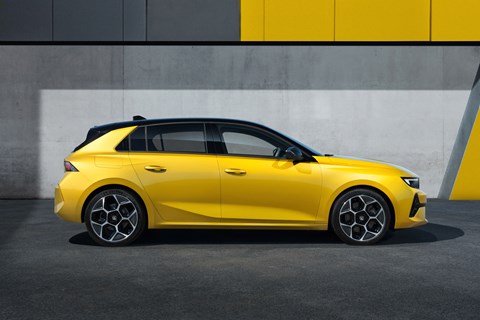
Otherwise, you can have the 1.5-litre diesel, which produces 128bhp, or you can have a 1.6-litre plug-in hybrid petrol powertrain. With up to 178bhp, that system brings CO2 emissions down to just 24g/km and officially lets you cover up to 35 miles on electricity alone. Then there’s the GSe explained above, with 222bhp.
What will it cost me?
Prices start at £23,275 for the entry-level hatchback, which gets you the basic Design model. If you want the GS Line – and we suspect most customers will – it’ll set you back at least £26,170. The Ultimate comes in at just over £29,000, while the hybrids start at £32,200, even in GS Line trim.